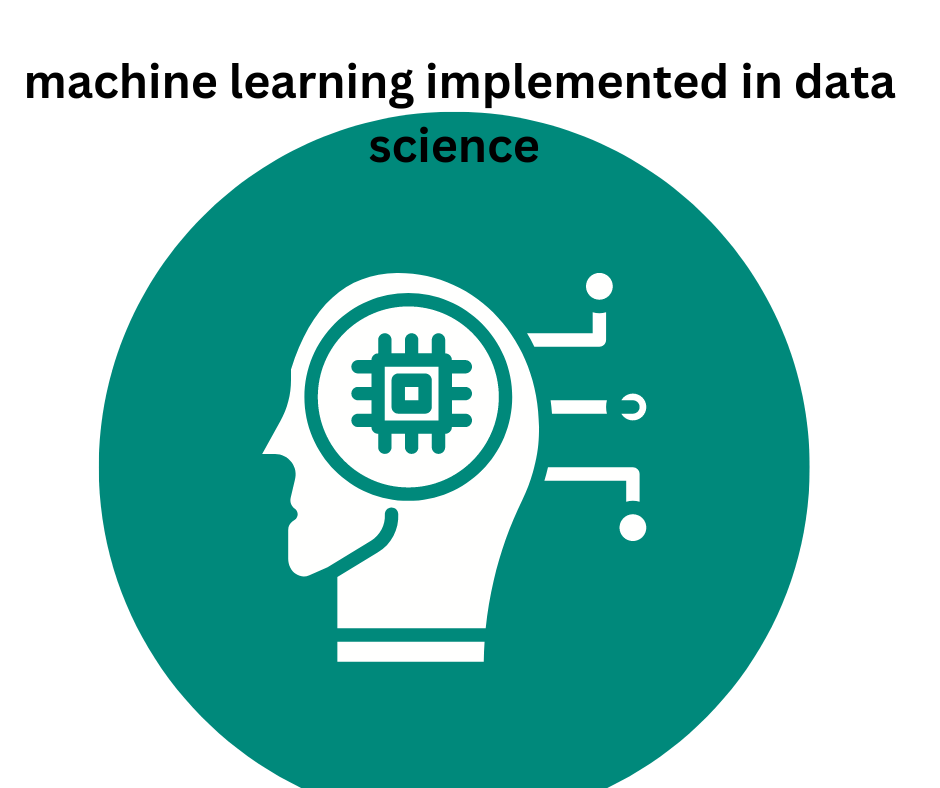How is Machine Learning Implemented in Data Science?
 Ruhi Parveen
Ruhi Parveen
Machine learning (ML) plays a pivotal role in data science, transforming raw data into actionable insights through sophisticated algorithms. It’s the backbone of predictive analytics, automation, and intelligent decision-making processes across various industries. This article explores how machine learning is implemented in data science, breaking down the concepts into easy-to-understand sections.
1. Introduction to Machine Learning in Data Science
Machine learning is a subset of artificial intelligence (AI) that allows systems to learn from data and improve over time without being explicitly programmed. In data science, ML algorithms analyze vast amounts of data, recognize patterns, and make predictions or decisions. The synergy between machine learning and data science is what drives innovation in fields like healthcare, finance, marketing, and technology.
2. The Role of Machine Learning in Data Science
In data science, machine learning is used to:
Predict Outcomes: ML models can predict future trends, customer behaviors, or market movements based on historical data.
Classify Data: ML algorithms categorize data into predefined classes, making it easier to manage and analyze.
Detect Anomalies: Unusual patterns or outliers in data are identified using machine learning, crucial for fraud detection or quality control.
Automate Processes: Repetitive tasks like data cleaning, feature selection, and even decision-making can be automated through ML.
3. Steps in Implementing Machine Learning in Data Science
Implementing machine learning in data science involves several steps, each critical to developing a successful model.
1. Data Collection
The first step in any ML project is collecting data. Data scientists gather relevant data from various sources, such as databases, APIs, or web scraping. The quality and quantity of data significantly impact the performance of machine learning models.
2. Data Preprocessing
Raw data is rarely clean or structured. Data preprocessing involves cleaning the data by removing duplicates, handling missing values, and correcting errors. Data is then transformed into a format suitable for analysis, often involving normalization or standardization.
3. Feature Engineering
Feature engineering is the process of selecting and transforming variables in the dataset to improve model performance. This can include creating new features from existing data, encoding categorical variables, or reducing dimensionality through techniques like Principal Component Analysis (PCA).
4. Model Selection
Choosing the right machine learning model is crucial. Depending on the problem (e.g., classification, regression, clustering), data scientists select from various algorithms such as:
Linear Regression
Decision Trees
Support Vector Machines (SVM)
Random Forests
Neural Networks
5. Model Training
Once a model is selected, it needs to be trained. Model training involves feeding the machine learning algorithm with data and allowing it to learn the patterns.
6. Model Evaluation
After training, the model’s performance is evaluated using metrics like accuracy, precision, recall, F1 score, or Mean Squared Error (MSE). Cross-validation techniques, such as k-fold cross-validation, are often employed to ensure the model generalizes well to unseen data.
7. Model Tuning
Model tuning involves fine-tuning the algorithm’s hyperparameters to achieve optimal performance.Techniques like grid search or random search help find the best set of hyperparameters for the model.
8. Model Deployment
Once the model is fine-tuned, it’s deployed into a production environment where it can process new data and make predictions in real-time. Deployment can involve integrating the model with existing systems, building APIs, or using cloud-based platforms.
9. Model Monitoring and Maintenance
After the model is deployed, it’s important to keep an eye on its performance regularly.Over time, models can degrade as new data trends emerge, necessitating retraining or updating the model to maintain accuracy.
4. Types of Machine Learning Techniques in Data Science
There are several types of machine learning techniques used in data science, each suited to different types of problems:
1. Supervised Learning
In supervised learning, the model is trained on labeled data, meaning the input data is paired with the correct output. Common algorithms include:
Linear Regression
Logistic Regression
Support Vector Machines (SVM)
Neural Networks
2. Unsupervised Learning
Unsupervised learning deals with unlabeled data. The model tries to understand the underlying patterns in the data on its own. Some common algorithms used for this are:
K-Means Clustering
Hierarchical Clustering
Principal Component Analysis (PCA)
Autoencoders
3. Reinforcement Learning
Reinforcement learning is a type of machine learning where an agent learns to make decisions by taking actions in an environment to achieve the highest total reward.It’s widely used in robotics, gaming, and autonomous vehicles.
5. Applications of Machine Learning in Data Science
Machine learning has a wide array of applications across different industries:
1. Healthcare
In healthcare, ML is used to predict disease outbreaks, personalize treatment plans, and accelerate drug discovery. Models can analyze patient data to forecast diseases or recommend preventive measures.
2. Finance
Machine learning helps in fraud detection, risk management, and algorithmic trading. It enables banks and financial institutions to assess credit risks, detect fraudulent transactions, and automate trading strategies.
3. Marketing
Marketers use ML to segment customers, personalize campaigns, and optimize pricing strategies. Predictive analytics powered by ML can forecast customer behavior, improving targeting and increasing ROI.
4. Retail
In retail, machine learning optimizes inventory management, enhances customer experience, and predicts sales trends. Recommendation systems, powered by ML, suggest products to customers based on their browsing history and preferences.
5. Manufacturing
Machine learning in manufacturing improves predictive maintenance, quality control, and supply chain optimization. By analyzing sensor data from machinery, ML models can predict failures before they occur, reducing downtime.
6. Challenges in Implementing Machine Learning in Data Science
Despite its advantages, implementing machine learning in data science comes with challenges:
1. Data Quality
The success of ML models heavily depends on the quality of data. If the data is incomplete, biased, or noisy, it can result in inaccurate predictions and unreliable models.
2. Computational Power
Training complex ML models, especially deep learning models, requires significant computational resources. This can be a barrier for small businesses or projects with limited budgets.
3. Interpretability
Some machine learning models, particularly deep learning models, act as "black boxes" where understanding the decision-making process is difficult. This lack of interpretability can be a drawback in fields requiring transparency.
4. Ethical Concerns
ML models can inadvertently reinforce biases present in the data, leading to unfair or discriminatory outcomes. Ensuring fairness and ethical considerations in model development is crucial.
7. Future of Machine Learning in Data Science
The future of machine learning in data science looks promising, with advancements in areas like:
Explainable AI (XAI): Making ML models more interpretable and transparent.
Automated Machine Learning (AutoML): Simplifying the model development process by automating tasks like feature selection and hyperparameter tuning.
Edge AI: Running ML models on edge devices like smartphones or IoT devices for faster and more efficient processing.
8. Conclusion
Machine learning is an integral part of data science, driving innovation and efficiency across various industries. From predictive analytics to automation, ML enables data scientists to extract valuable insights from vast datasets, leading to smarter decision-making. Despite the challenges, the potential of machine learning in data science continues to grow, promising exciting developments in the years to come. For those looking to excel in this field, enrolling in the Best Machine Learning Course in Noida, Delhi, Mumbai, Indore, and other parts of India is essential to understanding how to implement and utilize machine learning effectively.
Subscribe to my newsletter
Read articles from Ruhi Parveen directly inside your inbox. Subscribe to the newsletter, and don't miss out.
Written by

Ruhi Parveen
Ruhi Parveen
I am a Digital Marketer and Content Marketing Specialist, I enjoy technical and non-technical writing. I enjoy learning something new.